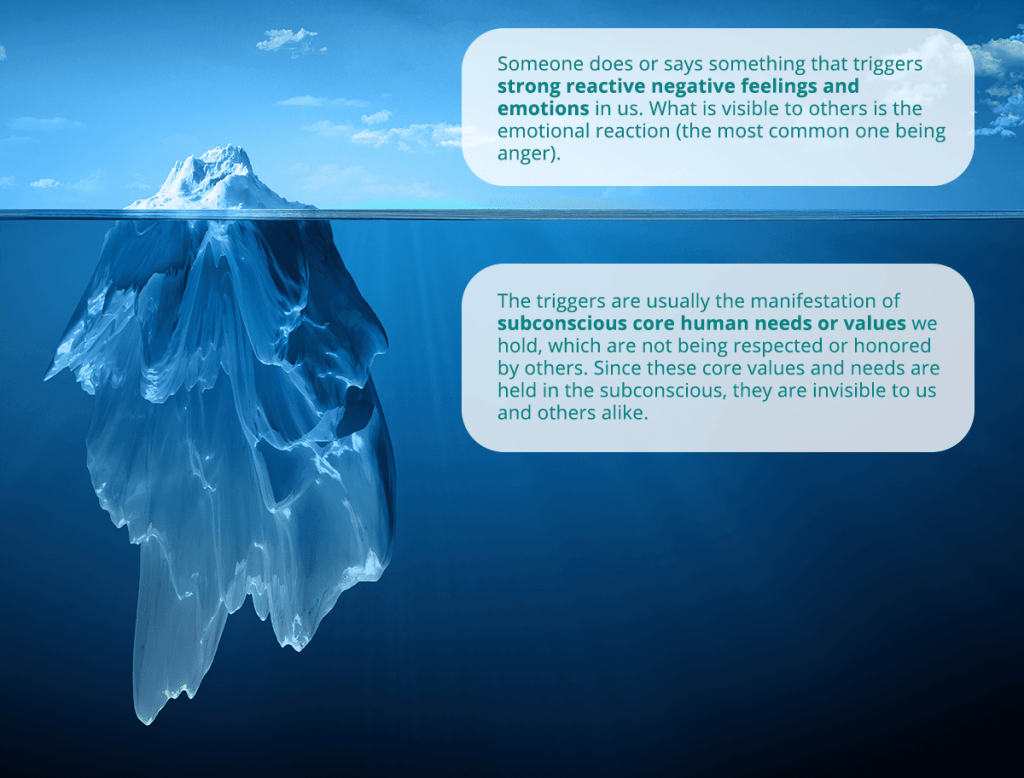In the United States (and now also in other countries!), the month of October is synonymous with the feast of Halloween.
What comes up for you when you think of Halloween?
For me, it’s many fond memories of celebrating with my children when they were little: excitedly deciding which costumes they were going to dress up in, going trick or treating, carving pumpkins and decorating the house in preparation for the highly anticipated event on October 31st. In addition, Halloween makes me think of little devilish gremlins and other figures from the dark side.
? ? ? ? ? ? ? ? ? ? ? ?
It also brings to mind Halloween-eve on one particular year, when my kids were 4 and 6 years old and my husband was away on travel. I was in the middle of making dinner at the end of a long, stressful, day. As usual, I was running late and there was chaos in the house: hungry kids were roughhousing in the family room, our dog Bailey was barking, the house was a mess, and I was going to be late for a meeting that night. That’s when our neighbor called me to ask if I could bring back the Crockpot I had borrowed the day before.

I didn’t have a choice; I had to bring the Crockpot back to our neighbor right away as she needed it that evening. I turned the heat off under my cooking meal, shouted at my kids to hurry upstairs and jump in the car all the while loading the Crockpot in the car. My oldest daughter said that she didn’t think we should leave the dog alone, and asked if she could let him jump in the trunk of the car so he could go with us. My husband had brought our station wagon to the garage over the weekend to be detailed – at last our trunk was clean again, free of dog hair! I quickly explained this to my daughter. Obviously, after having spent a significant amount on getting the car cleaned, bringing the dog was out of the question. I impatiently explained that we were going to be back in 5mns and that Bailey could stay home alone. I finally had everything turned off and safe in the house, ran into the garage to hop in the car … only to find Bailey happily sitting in the trunk and my triumphant daughters beaming with satisfaction.

I am ashamed to admit that … I completely lost it in that moment. After I let Bailey out of the car, I got VERY angry at my daughter and made my anger VERY clear in no uncertain (or quiet) terms. All the way to our neighbors, and all the way back to the house again... The girls were both in shock and crying at my outburst.
This outburst was caused by some of my saboteurs – especially my “controller” saboteur. We all have them; they are basically our survival instinct. They often manifest as voices in our heads telling us to hold back, to protect ourselves or hide, why we should feel ashamed or guilty or why we should be controlling a situation. They basically dictate who and how we should be in the world. We develop these conclusions at a very young age – either in reaction to life events, or by integrating messages we hear from adults around us. Wherever they are coming from, these at-times self-defeating messages have at their core the good intention to help us navigate the world safely. Here are some examples:
- You’re not good enough...
- You better be perfect …
- Make sure you keep things under control …
- Others are cruel...
- You can’t trust anyone...
- It’s all your fault...
- You are so clumsy...
- You’re always late...
- You’re not good at making friends...
Do you recognize any of these? What do your saboteurs tell you?
You might have heard the concept of “Name it to Tame it”: take a moment right now and write your saboteurs down somewhere. Recognizing and identifying our saboteurs is half the battle to better control them.
These devilish gremlins hold us back by stopping us from being our best selves, thereby stopping us from living our best lives. Since their job is to protect us from danger and help us survive, they can become particularly problematic in relationships. If somebody says or does something that seems like an attack to you, your army of gremlins might rise up in arms in your defence and start creating conflicts, in part because you become defensive, thus starting a vicious cycle of conflict --or violence-- with others.
Interestingly, October is not just the month of Halloween: October 2nd happens to be the United Nations’ International Day of Non-Violence.
Mahatma Gandhi said:
“We may never be strong enough to be entirely nonviolent in thought, word and deed. But we must keep nonviolence as our goal and make strong progress towards it.”
And Nelson Mandela added:
"One of our strongest weapons is dialogue."
Wouldn’t it be wonderful if there was a magical and easy tool to help us deal better with our conflicts, and support us in reaching nonviolent communication with our fellow humans, even when our gremlins are triggered?
Well I have good news for you: there is!!!
It’s called Nonviolent Communication, or NVC. Nonviolent Communication, as its name states, is a way to communicate with other human beings without violence - in other words without allowing the gremlins to start fights with other gremlins. The logo of NVC is the infinity sign:

It represents infinite communication: communication that does not get interrupted or stopped by violence. It is a way to stay in relationships despite our gremlins: in peace, respect and tolerance, and without damaging our relationships through violence. It is not a technique to end disagreements per se, but rather a method designed to increase empathy and improve the quality of life of those who utilize the method and the people around them. NVC focuses on effective strategies for meeting fundamental needs for all parties in a conversation. The goal is interpersonal harmony and obtaining knowledge for future cooperation. You can find much more detailed information about NVC at CNVC.org
Nonviolent Communication Model
The root of the theory can be illustrated with this iceberg:

When someone triggers us by trampling our deeply held values or by denying us our core needs, we will usually feel strong negative emotions and might “lash out” an outburst of violence.
Using Nonviolent Communication, instead of “lashing out” at the triggering person, one would express their feelings in the following way:
- When I observe […] (see, hear, …)
- I feel [….]
- What I need is […]
- My request: would you be willing to [repeat to me what you think you just hurt], or [help me with my problem]?
Going back to that fateful Halloween night: by the time I finished making dinner after my daughter put our dog in the car, I had had time to calm down and practice my recently acquired NVC tools. The first step was to ask myself why I had been so incredibly triggered just because of a little bit of dog hair in the trunk of my car … I had to look at what was below the surface: what needs or values had been so disrespected that I had such a violent reaction about?
Here is what I was able to say to my oldest daughter that night – after having apologized for my outburst:
When I got into the garage and found Bailey in the trunk, after having asked that we leave him home,
I felt very upset, hurt and not heard. I felt unimportant, and I felt that I had lost control over the situation. But mostly, I felt very afraid: if you aren’t listening to me when I am asking something so small now, what will happen when you are older and I ask you to not do something that’s much more consequential?
My need for trust that when I ask something, my requests are being heard and honored, wasn’t respected when you put Bailey in the car.
Would you be willing to repeat to me what you think you just heard?
She listened to what I was saying intently. When I was done, she took my face into her little hands and just said:
“Oh Mama, I am so sorry that I scared you!”
It was one of the sweetest moments of my life (as strange as it might seem!).
My favorite mindfulness guru, Thich Nhat Hanh, said it best:
"When someone insults you or behaves violently towards you, you have to be intelligent enough to see that the person suffers from his own violence and anger ... When we see that our suffering and anger are no different from their suffering and anger, we will behave more compassionately."
This powerful communication tool can be used with anyone in any environment, for example with your partner at home, your colleague or manager at work, or with your friends.
Here are a couple of other examples:

Couple Conflict
My late husband, Steve, was a very punctual person. He had a difficult childhood and for him, punctuality was one of the ways that he could keep his life in order and under control. Unfortunately, he married me, a French woman. As some of you might know, French time and American time are not the same: in my intercultural trainings, I like to joke about the fact that the French are “genetically late”: on average, about 15 minutes. So, whenever Steve and I would have a date or meet somewhere for anything at an agreed-upon time, I would be my usual 15 minutes late (at least!), and he would often get quite irritated at me - because I would have triggered his Control gremlins. He would be very mad at me, which usually triggered within me feelings of defensiveness, but also feelings of hurt and guilt. Maybe even shame. Therefore, I would defensively fight back (by giving lots of excuses and justifications and trying to turn tables around). The date would end up being a total failure and our relationship would be eroded. Here’s another way Steve could’ve handled the situation instead of lashing out at me:
When we have a meeting at a certain time and I have to wait for at least 15 minutes,
I feel furious, disrespected, and unimportant,
because my need for punctuality, trust, and respected agreements is not being met.
I’m wondering if you could tell me what you think you just heard?
(Later after a successful repeat)
And I’m wondering if you’d be willing to help me out so we can find a solution to this problem?
After using nonviolent communication on this timeliness conflict, we eventually started understanding each other, respecting our differences without judgment, and from this place of mutual respect and understanding, were able to work on peacefully finding solutions to the problem.

Work Conflict
A very long time ago, I was working in sales for a medium-size company. I was working incredibly hard and my efforts were paying off: I was able to develop a totally new sales territory from scratch, and bring in multi-million dollars in sales. One day, I found out by accident that one of my male colleagues – who had arrived in the company after me and had inherited an already developed territory, and who was basically not working very hard at just maintaining it - was making 50% more base salary than me. There was honestly no justifiable reason for this discrepancy in our salaries (not even a few decades later looking back!!). Despite my young age (or maybe because of it?!) – I stormed into the CEO’s office and demanded - loudly - equality and reparations. My attempt failed, and I quit the company soon thereafter. Had I known about nonviolent communication then, I would probably have gone home to take some time to understand what was happening to me, and formulate a nonviolent argument:
When I found out that Joe is making 50% more base salary than I am,
I felt irate, deeply hurt and profoundly humiliated. I also felt completely betrayed and taken advantage of.
Because my need for recognition and acknowledgment of my hard work, and my need for fairness and equality, were completely trampled.
I am wondering if we could sit down and have a conversation to review my compensation package.
In all honesty, I don’t believe that this would have been any more successful than my outburst was. Nor do I believe that if it had been, I would have wanted to stay: the feeling of betrayal was so deep that I’m not sure any gesture on the part of the company would have healed the wound. But simply just having self control for myself, and taking the high road – therefore being able to calmly express my feelings of injustice, might have been a personal victory. It certainly would have enabled my management to hear my words more clearly – as they would not have been obscured by the tone.
This is a short video that explains NVC further:
To learn more about how you can communicate effectively, especially in difficult scenarios, please do get in touch! You can book a FREE sample session with me here.
PQ Training
Earlier I asked you to write down what the gremlins in your head say to you. These saboteurs (scientifically known as the limbic part of your brain) react to challenges in ways that generate negative emotions such as stress, disappointment, self-doubt, regret, anger, shame, guilt, or worry. They are different for every person so it’s important to identify yours. What’s even more important is to learn how to tame these negative, reactive thoughts and emotions and instead, use the calm, rational and positive part of your brain to deal with the challenges that life throws at you.
This is where PQ training comes in!
Through this specialty program, I can help you build powerful new muscles (scientifically known as neural pathways) in your brain, strengthening your positive mental muscles versus the negative. The result? You will be able to respond to life’s challenges with much less stress and greater clarity, creativity, and resilience, allowing you to THRIVE in life!
Learn more about the program and get in touch to join the program today.




